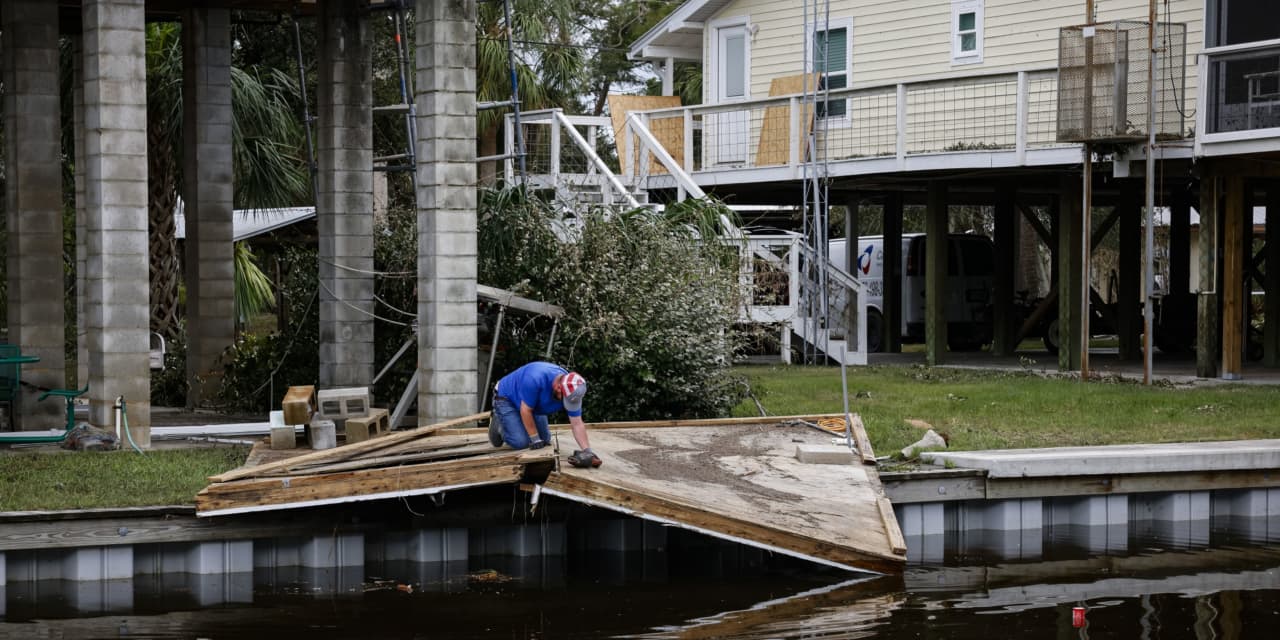Hurricane Idalia will likely cause $10 billion to $16 billion in property damage, according to Moody’s preliminary estimates released on Thursday. Insurers will shoulder part of the loss, although an official estimate of insured loss won’t be available until days later, the company said.
While the numbers could change in the coming days, the damage from Idalia will be far less than the $113 billion damage caused by Hurricane Ian last year. Insurance covered some $50 billion to $65 billion of that.
Even though a large, multistate area—from Florida to Georgia to North Carolina—has experienced significant impact from Hurricane Idalia, the damage isn’t “catastrophic,” according to Moody’s analysts.
The Big Bend area south of Tallahassee and north of Tampa, where the storm made the landfall, is one of the least developed and most sparsely populated regions in the state. Hard-hit Dixie, Levy and Taylor counties are among the few Florida’s coastal counties that aren’t large enough to be part of a metropolitan area.
“This means that the hurricane’s worst impacts were felt in an area with fewer people and structures than most similar events,” wrote the analysts.
The relative lack of economic activity also means property values in the Big Bend are lower than the rest of the state, further suppressing the price tag of Idalia. In the first quarter of 2023, the median single-family house price of the three counties were lower than $205,000, according to the Moody’s report.
Hurricane Ian, in contrast, battered far busier parts of southwest Florida last year, leaving huge property damage in the populated and wealthier areas of Cape Coral and Fort Myers. In Lee county, where the two cities are located, the median single-family house price was above $350,000.
The fast-moving nature of Hurricane Idalia and its path after landfall also helped to prevent catastrophic inland flooding. Slower-moving storms lashing an area for an extended period could cause way more damage. But Idalia was out to sea within about 24 hours of making landfall, wrote the analysts.
Even for the damage incurred, insurers might be able to walk away from much of the responsibility. Hurricane Idalia made landfall as a powerful Category 3 storm, but weakening to a Category 1 hurricane within hours. That means less damage from the wind. Moody’s estimates that flooding would be responsible for the majority of the loss.
While typical homeowner insurance covers wind damage, flood coverage requires separate policies. Since the Big Bend area hasn’t been struck by a hurricane since 1968, many residents might not have flood insurance and be left holding the bag. That’s good news for insurers, but bad news for the impacted families.
Many insurers and reinsurers had already been reducing their exposures to Florida from 2017 to 2022, according to
UBS
analyst Brian Meredith, although some—including Warren Buffett’s
Berkshire Hathaway
(BRK.A)—saw an uptick this year given the attractive high pricing in the market.
Florida’s homeowner insurance market is dominated by smaller regional carriers. Citizens, the state-backed last-resort insurer, has also been gaining market share with many private companies pulling out of the market. It is now the largest homeowner insurer in the state with 15.6% market share.
Among publicly traded companies, Progressive (PGR) and Allstate (ALL) are the only top 10 homeowner insurance underwriters in Florida, with 4% and 3.2% market share, respectively, according to Meredith of UBS.
For commercial property insurance,
Markel
(MKL),
Heritage Insurance
(HRTG), and
Chubb
(CB) have the largest market share in the state—9.1%, 7.8%, 6.7%, respectively. But it’s hard to know how much of the commercial premiums are tied to policies with flood endorsements.
Idalia won’t go down in history as an especially costly event and Florida’s near-term economic outlook remains strong. Still, the hurricane is “the latest reminder that the state and broader Southeast sit in a precarious position, with structural advantages constantly at risk of being undermined by a disaster,” wrote the Moody’s analysts.
Write to Evie Liu at evie.liu@barrons.com
Read the full article here













Leave a Reply